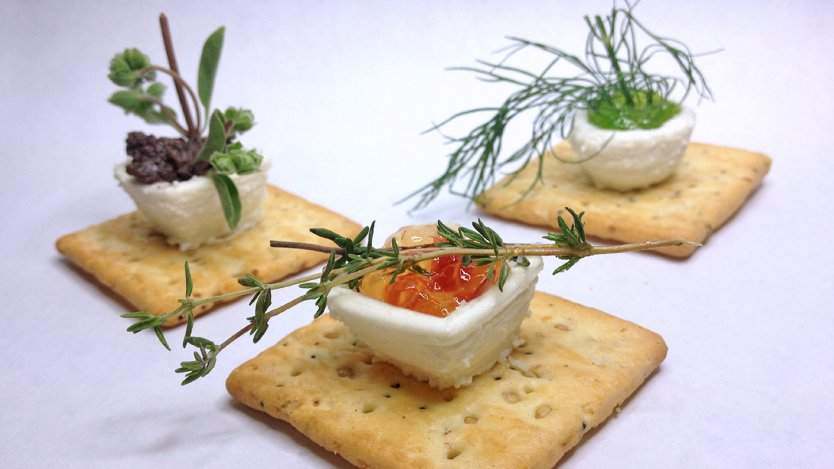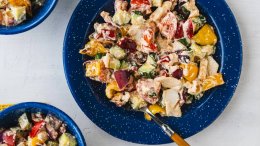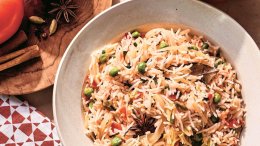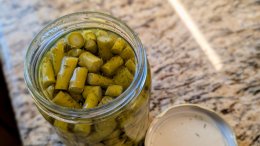Nearly made obsolete by the "paperless" movement, printers are coming back with a vengeance. But today's generation of printers aren't printing copies of e-mail jokes or homework assignments. The 3-D printer has become increasingly accessible for printing toys, machine parts, and even artificial limbs.
3-D printers work by printing successive layers of stacked material until a 3-D object is formed. Earlier versions of the 3-D printer use a pliable plastic that is heated and extruded in ultra-fine lines. 3-D printers today are able to print with more diverse materials including ceramic, steel, and even food.
While 3-D printed food sounds like it's straight out of a sci-fi novel, there are a number of practical uses. Dietary experts speculate that printers can be used to create finely-tuned diet foods infused with customized vitamins and nutrients, shaped and coloured in appealing ways. Imagine a plate of chicken wings infused with spinach or a pretzel that's actually a multivitamin. 3-D printers will soon allow for an unlimited combination of colours, textures and shapes.
NASA recently enlisted a mechanical engineer to develop a 3-D printer that makes pizzas, a dish that is typically impossible to produce and store in space. A "digital recipe" will be developed to produce dried powders and purées that mimics tastes and textures of the real thing. The printer will start from the bottom with the dough, then build additional layers such as sauce and toppings.
The idea of creating space-pizza anytime soon may sound a little dubious, but 3-D printers are being used right now to print chocolate, cheese, and sauces in delicate shapes that would be nearly impossible to produce by hand.
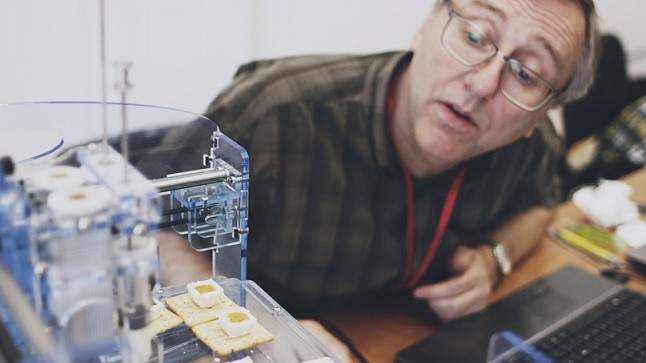
3-D printing by Brian Queen. Photo by Faby Martin.
Canada's own Brian Queen showcased his own 3-D food printing process at Calgary Mini Maker Faire, where he made goat cheese appetizers with different fillings. Queen programmed his printer to create square-shaped vessels on crackers. Queen started by drawing a virtual model of a square bowl he used at home. The model was then sized down to a miniature format that fits on a cracker, printed in goat cheese. A second nozzle then fills (or prints) the inside of the "bowls" with hot pepper jelly. An alternate version uses black olive tapenade. The resulting canapés are topped with herbs, creating unique sculptural pieces that virtually prepare themselves.
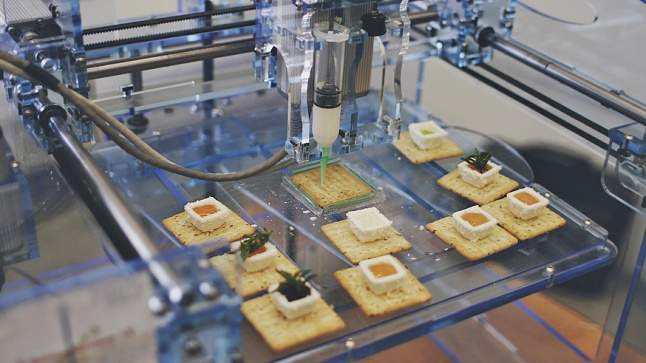
3-D printing by Brian Queen. Photo by Faby Martin.
As 3-D printing technology becomes more sophisticated, it's possible that one day they will become an everyday appliance next to the coffee machine. We just don't want to think about the mess from a printer jam in the middle of the "chill cheese dog" program.

